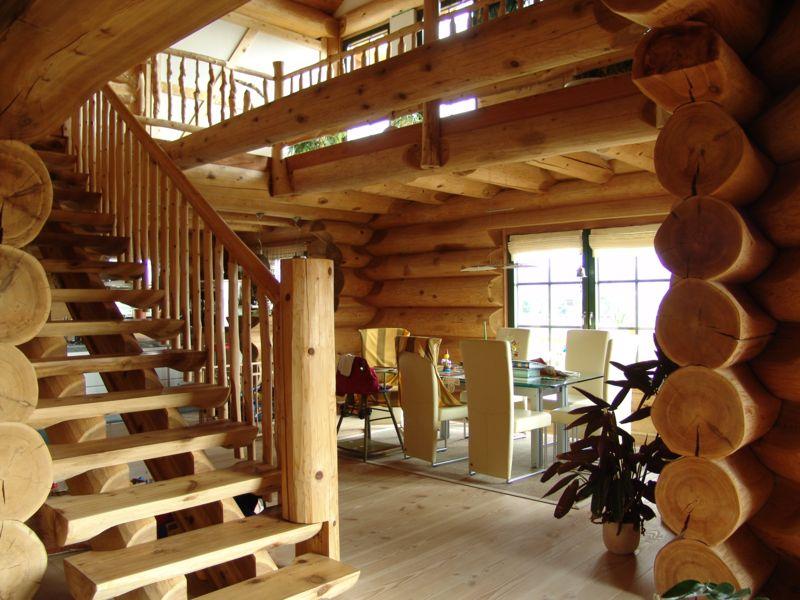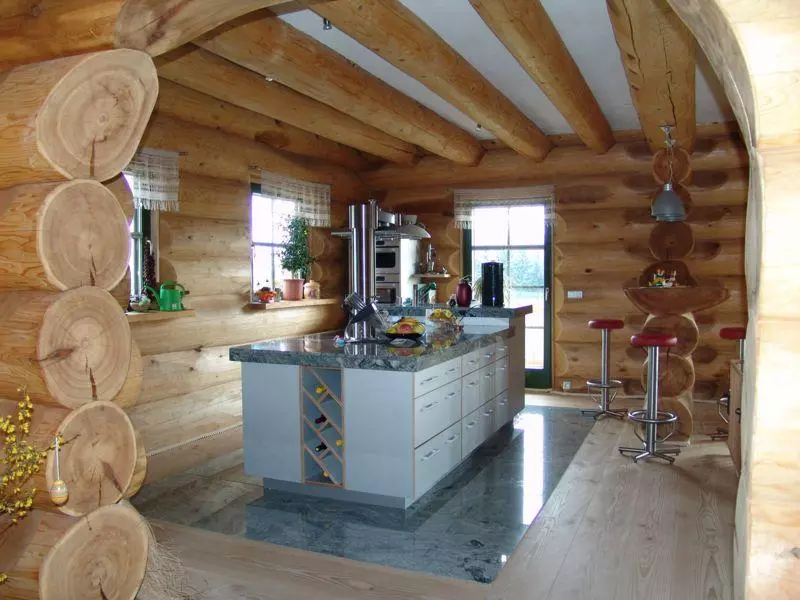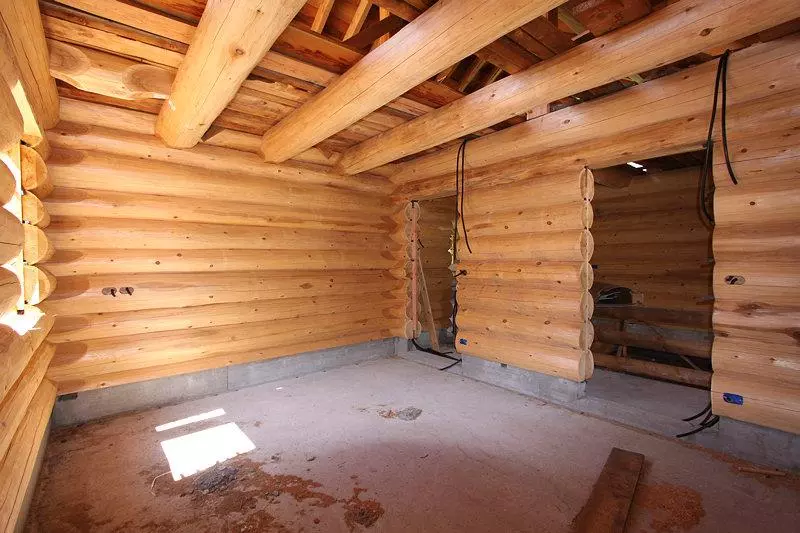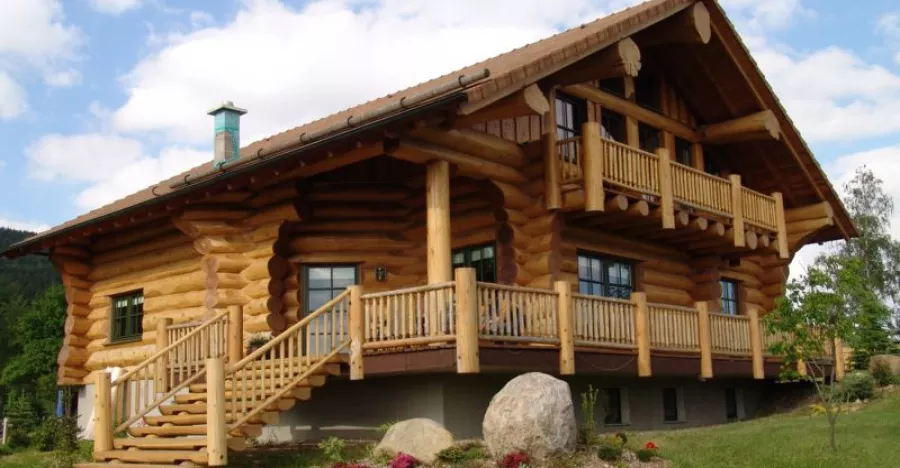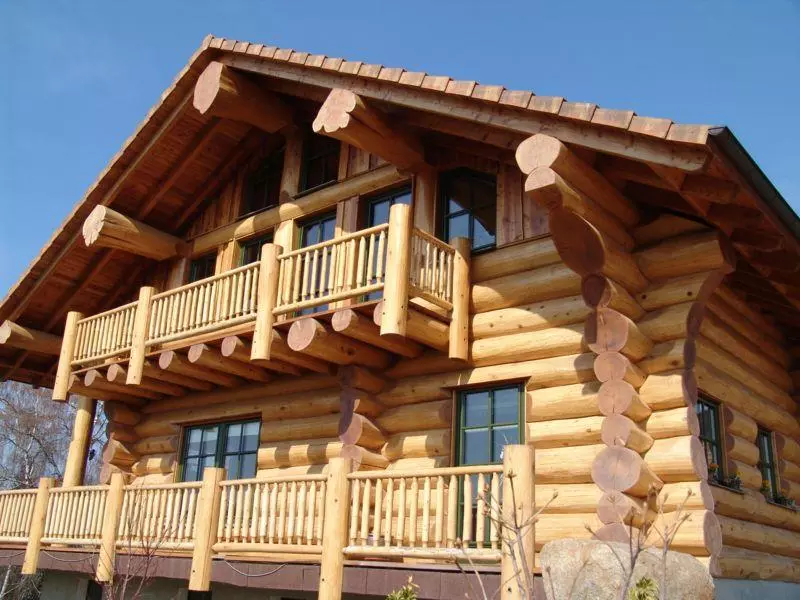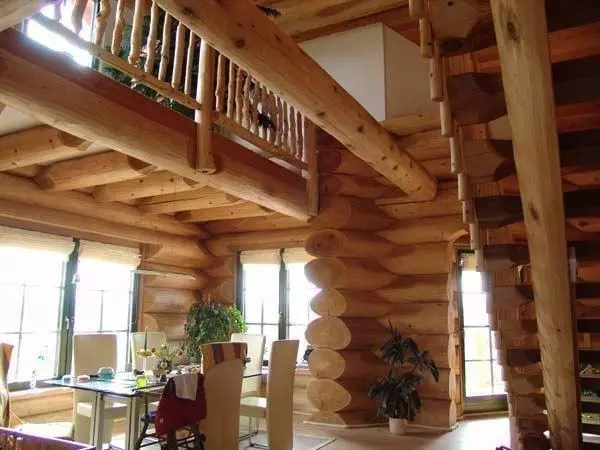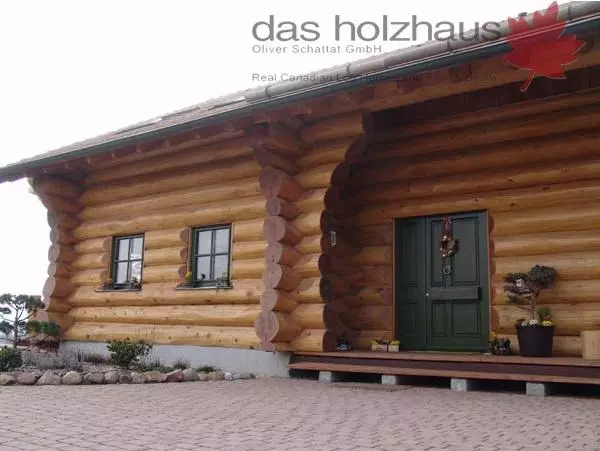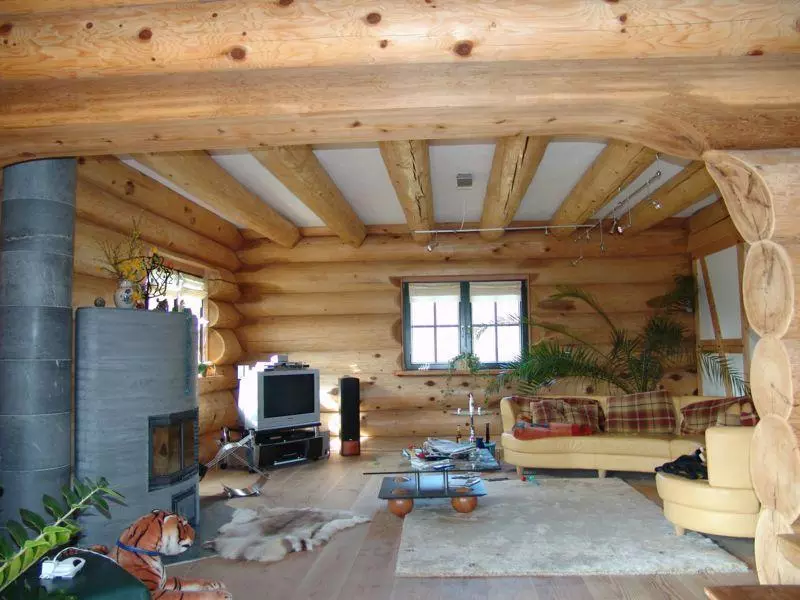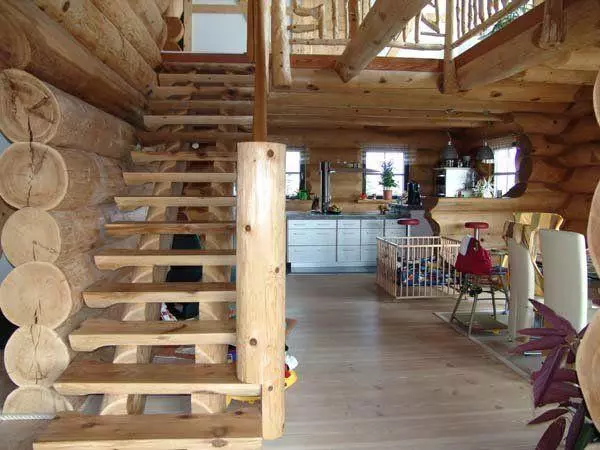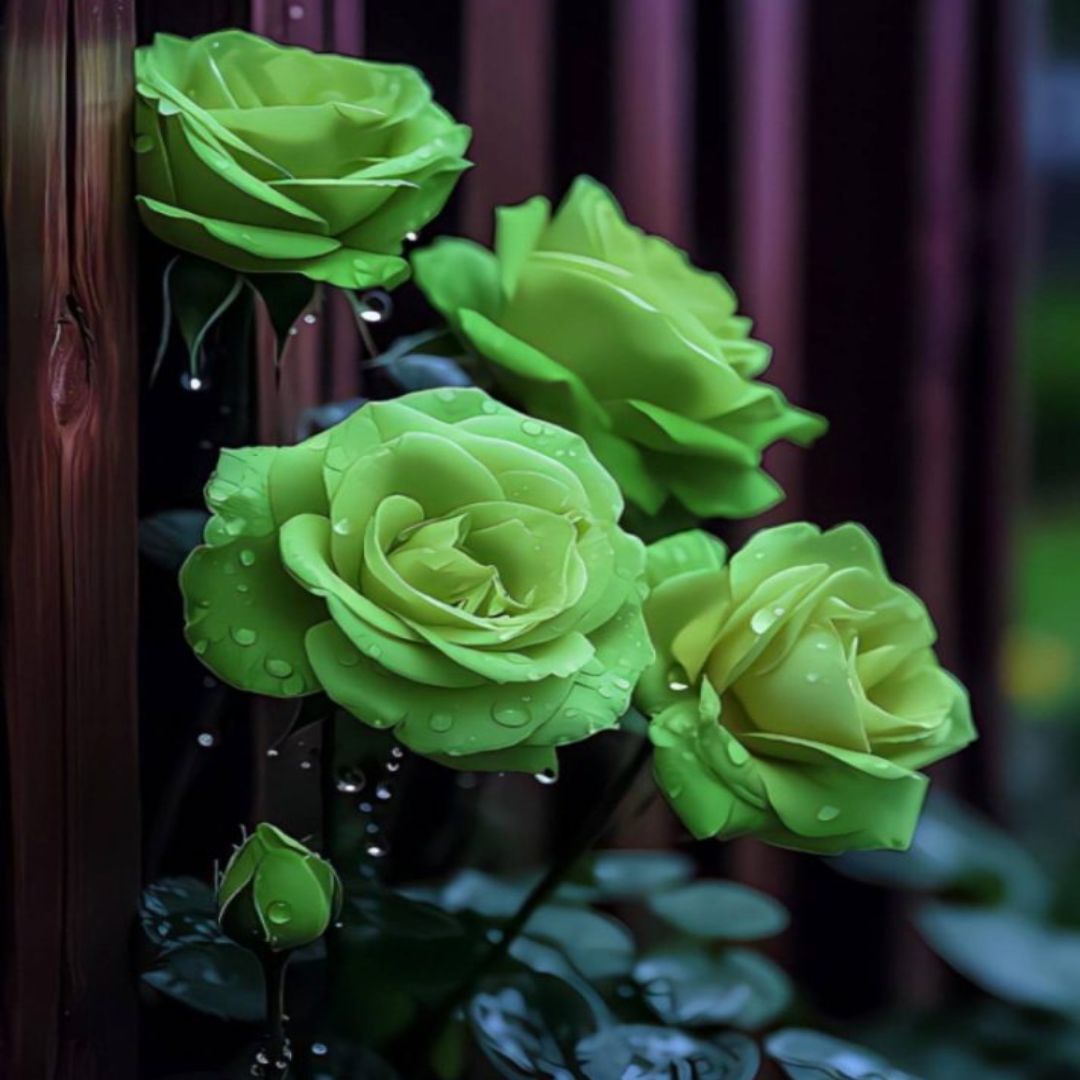It doesn’t get much better than this classic style of log house design. The custom log house built by Bernard Blockhaus has the sort of log cabin details that people only dream. Just take a look at the custom stairs that lead up to the outdoor deck, logs are used on both the stairs and all of the railings for a log cabin look that exceeds other log house designs. The front of the wood cabin has a beautiful covered porch with an upper covered patio up above. Inside you have all of the logs visible with plenty of posts and beams throughout. This style of cabin building uses larger logs which makes this wood cabin so aesthetically pleasing. You’ll want to take a look inside this custom log cabin building for some ideas and inspiration of your own.
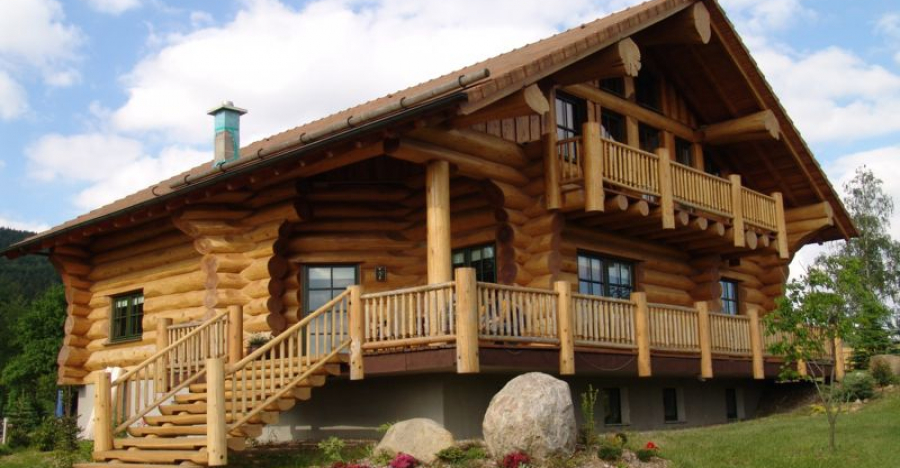
It’s easy to see why wood cabins are still so popular after all these years. They look good, are energy efficient, and they stand the test of time. These days you hear more and more about energy efficiency, and it continues to be a trend in the future. And that’s good news because energy efficiency helps the environment in that it conserves precious natural resources and reduces pollution, while also saving you money. And with the growing concern over climate change and future energy, there are sure to be more and more log house energy options to incorporate into your wood cabin or home. When it comes to the planning of your wood cabin design, you will want to do your research and find out all of the available options and choices that you have to make your wood cabin as energy efficient as possible.
The water system you use in your wood cabin has a lot to do with what you pay on your energy bills. Hot water accounts for approximately 13 percent of most log homes annual utility bills. Usually, hot water is provided by an insulated water tank that is fitted with a gas burner or electric heating elements. If you are going the traditional route, you want to choose the highest efficiency hot water units that are available. If you live in an area with even a reasonable amount of sunshine, you might also consider a solar hot water collector. This roof or yard mounted water system circulate the water or fluid through a panel where it’s then warmed by the sun. The warmed fluid then passes into an insulated storage tank where it can then be drawn for use in radiant flooring or to heat for drinking water.
A tankless hot water system is another option that you might consider. This water system skips the storage of hot water and instead provide it only when water is needed. These wall-mounted gas units cost more than water heaters, but they eliminate the cost of continually having to maintain a hot water reservoir. When you are considering a tankless water system, you want to be sure to consider the amount of hot water that you require. A household of four, for example, who are all needing hot water at the same time can overpower a single tankless system leaving someone with a cold shower.
